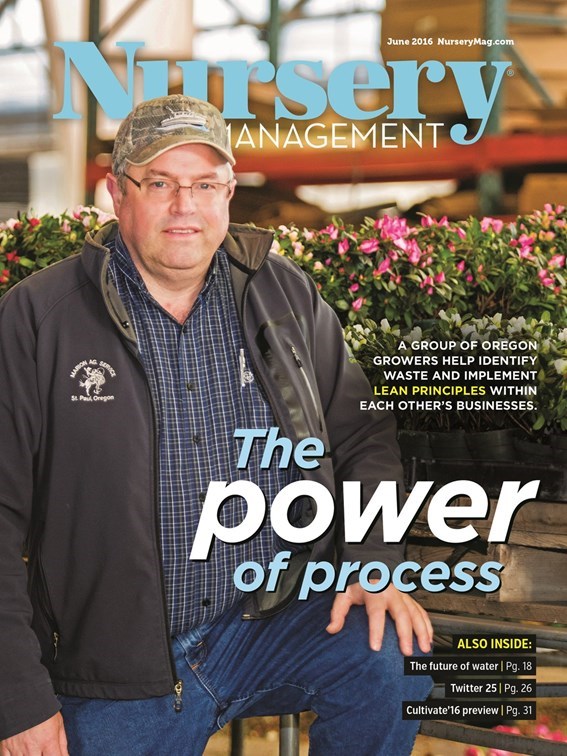
For generations, growers were taught that the more pesticide you sprayed on a plant, the better the coverage would be. However, a team of researchers led by Dr. Heping Zhu has determined that is not the case. Through USDA Specialty Crop Research Initiative grants, Dr. Zhu and his team have designed an intelligent sprayer that is more efficient, reliable and operator-friendly. The variable-rate, laser-assisted sprayer has been tested at several nurseries across the country, and it sliced pesticide cost in half without any loss in control.
Randy Zondag, director for the Ohio State University Extension - Lake County, has been working alongside Dr. Zhu for 10 years on the intelligent sprayer project. Zondag covers some of the highlights he’ll discuss at the Cultivate’16 session.
Q: What makes the sprayer intelligent?
A: The intelligent sprayer has a laser on the front of the sprayer. What that laser does is measure the height, width and density of canopy. Before, either you turned the nozzles on or off. Now, with this sprayer the nozzles actually pulse. When you walk up behind the machine, no longer do you see this big mess behind the machine. You wonder ‘is anything coming out of the sprayer?’
Q: What have the results been at test sites?
A: We have reduced drift by almost 70 percent. Compared to the original sprayers, we are using 75 percent less liquid and pesticide than we did before. These products are being used more effectively, they’re staying on the target itself. They’re not drifting into the environment. A lot of people are finding with these sprayers they drastically reduce their pesticide bill. On top of that, it reduces the amount of time they spray, amount of times they fill the tank, amount of time the engine runs, so your carbon footprint is reduced and your labor is less. There are a lot of parts to this that improve the situation that exists.
Q: How was it developed?
A: During Dr. Zhu’s research into half-rate application we found that when we sprayed that much material, not only does it not stick to the plant, we also found that it ends up on the ground. The other excess material we shot drifted off. So we were losing 40-70 percent just to off-target applications just because the concept in our mind was ‘the more, the better.’
If you look at a diagram of where we spray on a plant, most of what we miss is open space where the pesticide goes: the space between the plants, space where there is not a lot of canopy. These sprayers were set up to work completely differently. They were putting on large volumes at the top, in fact they had bigger nozzles at the top, smaller nozzles at the bottom. Because of that issue, the product was going where we didn’t want it to go rather than where we wanted it to go. So what we found was by changing the array of spray nozzles, we also changed the way we applied the product.
Q: How much does it cost and how can a grower get one?
A: While it’s more expensive than a traditional sprayer, you can recoup your costs in the neighborhood of two years just with the savings alone. The five nurseries in Tennessee, Ohio, Oregon, and two in California are all using prototypes. But companies are interested in the rights to build this, as well. Normally, with research it takes 30-50 years for growers to understand the significance of it. This research started in 2005. So from the start to companies talking about building it has taken just 10 years.
Even more exciting is Dr. Zhu is looking at building packages to retrofit existing sprayers. A lot of people don’t want to buy a whole new sprayer, so he’s designing a package you can put on your existing sprayer to make it an intelligent sprayer. To watch the sprayer in action, go here: bit.ly/23XPDeh
Want to go? Monday, July 11 | 3 p.m.

Explore the June 2016 Issue
Check out more from this issue and find you next story to read.
Latest from Nursery Management
- GardenComm 2024 Annual Conference registration is open
- Landmark Plastic celebrates 40 years
- CropLife applauds introduction of Miscellaneous Tariff Bill
- Greenhouse 101 starts June 3
- Proven Winners introduces more than 100 new varieties for 2025
- CIOPORA appoints Micaela Filippo as vice secretary-general
- Rock Star Roses
- The container challenge





